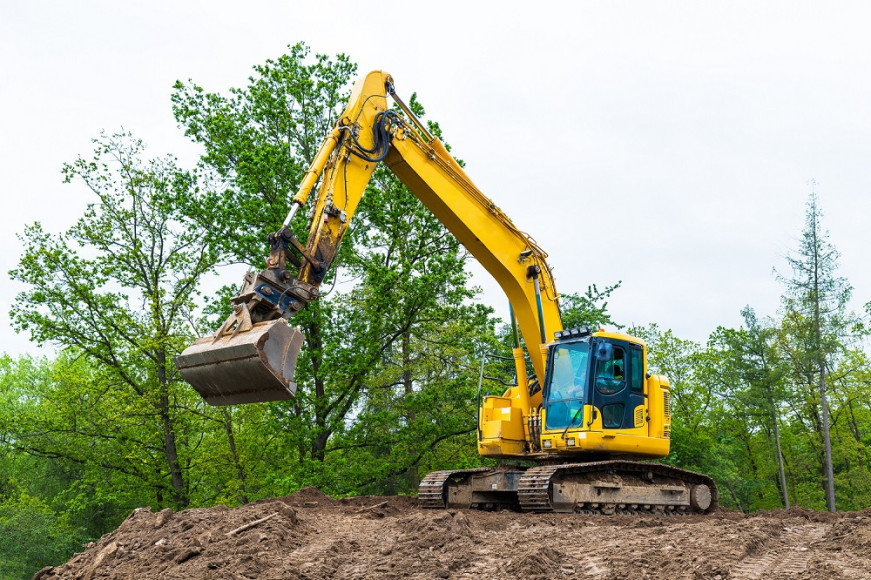There are many industries and situations beyond oil and gas that require expert environmental remediation services.
When people hear the words “environmental remediation,” their minds tend to jump to oil and gas spills, the contamination that follows, and the considerable work required to reduce environmental impact and mitigate safety risks.
This is understandable, especially because oil releases and their impact receive such extensive coverage and attention these days. But in reality, remediation is both a proactive and reactive practice that applies to many different industries and sectors, be it chemical, railroad, manufacturing, education, and beyond.
As a result, it’s important for businesses operating in these areas to recognize when environmental remediation services might be necessary, understand the types of environmental remediation techniques that are required, and how to enlist assistance.
Examples of Environmental Remediation Services in 4 Industries
Over the past several decades, a combination of technological advances and stiffening regulatory requirements have led to drastic improvements in the protection against environmental contamination. But it still happens, and addressing these types of situations quickly and comprehensively (with the right remediation techniques) is of the essence.
Here are five examples of environmental remediation scenarios — outside of the oil and gas sector — that we’ve handled at Antea Group.
Chemical
For obvious reasons, chemical contaminations can be particularly troubling. Without proper action, it’s all too easy for groundwater and soil to be affected, leading to cascading effects. Here are two cases where our team answered the call.
THE SITUATION: Antea Group was notified of a hydrochloric acid spill at a manufacturing facility, in which more than 100,000 gallons of a 35% solution of hydrochloric acid were released. The materials were contained within a stormwater detention basin, which became a corrosive pond with a pH of 1.94.
THE SOLUTION: A quick reaction and initial response were critical in mitigating the extent of this incident’s reach. From there, more than 2,000 cubic yards of affected soil were excavated and safely disposed of, while a specialized batch treatment process was implemented prior to 579 tanker truckloads of water being transported to a wastewater facility. After an additional evaluation of sediment and shallow soils, the basin was returned to service.
Our application of a pretreatment procedure led to the client saving more than $1.5 million in disposal costs. This just goes to show how big of a difference an experienced partner can make.
Here’s another look at a chemical situation Antea Group helped remediate:
THE SITUATION: Chlorinated volatile organic compounds (CVOCs) at a manufacturing site had entered the soil and groundwater, migrating to four neighboring properties and reaching depths of 20 meters below the surface.
THE SOLUTION: Antea Group’s environmental remediation experts conducted a feasibility study screening biological, chemical, physical, and thermal technologies, focusing on vital factors such as protection of public and environmental health, short-term and long-term effectiveness of the remedy, regulatory compliance, public opinion, cost, and more. Ultimately, an in situ chemical reduction (ISCU) remedy was deployed in the source area and distal plume, leading to a substantial reduction in contaminant mass and plume footprint.
Railroad
Railroad construction often involves the importing or exporting of soil in accordance with existing or proposed surface grades. Improper management of these materials can lead to liability exposure.
THE SITUATION: A railroad client engaged Antea Group to help guide the development of a soil management program (SMP) for construction projects, with the goal of creating consistent uniform practices and reducing environmental liability.
THE SOLUTION: As usual, Antea Group gathered input from various stakeholders including the client's engineering department and their contracted design engineers, the environmental department, and construction managers in operations. These steps helped in generating a customized solution suiting the needs of all parties involved. The eventual SMP included a flexible soil sampling plan, collection of representative soil samples for testing, and a streamlined summary report for the engineering department.
Manufacturing
In the world of manufacturing, environmental impact is a constant consideration. Given the importance of smooth and uninterrupted operation, it’s critical to stay attentive and proactive regarding any possible contamination.
THE SITUATION: A foam manufacturer documented historical releases of chlorinated solvents and freon impacting the groundwater beneath and downgradient from its plant operations. Municipality oversight required that the manufacturer assess the full extent of these impacts before initiating and corrective action.
THE SOLUTION: Antea Group conducted a passive soil gas survey to identify additional source areas of contamination, isolate lateral contamination, and develop a plan for the placement of additional shallow monitoring wells. The installation of these wells helped define the extent of impacts in the groundwater while significantly reducing client costs and fulfilling the municipality's requirements.
Education
It might not be one of the first industries that comes to mind, but education is one of many that encounters potential environmental liabilities as a reality of doing business.
THE SITUATION: A large university had acquired a 200-acre hospital property for future development. A portion of this land had been impacted by chlorinated solvents and petroleum. Assistance was needed in transferring the liability, returning the property to residential use, and managing contaminant transport with minimal disruption to campus or hospital activity.
THE SOLUTION: Working as a collaborative partner and advocate, Antea Group implemented a guaranteed fixed-price remediation program, allowing the university to eliminate liability associated with known pollution conditions. Investigation of supplemental soil and groundwater reduced uncertainties. Additionally, Antea Group worked with an insurance broker to develop a program of the highest value to the university. Excavation and sulfate injection led to reducing the impacted area from 40 acres to fewer than seven, followed by decommissioning under our team’s oversight and then redevelopment.
Environmental Remediation Techniques Are Useful Everywhere
Oil spills will always grab the headlines, but environmental remediation applies to a vast assortment of scenarios, spanning many industries. The five examples above are only a few that our team at Antea Group has assisted with.
Have any questions?
Contact us to discuss your environment, health, and safety needs today.


